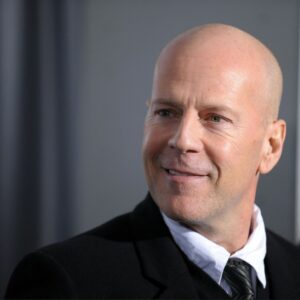Daniel Radcliffe’s rise to stardom is inextricably linked with the Harry Potter franchise. For over a decade, Radcliffe embodied the beloved young wizard, a role that catapulted him into international fame. Yet, in the years following his departure from Hogwarts, Radcliffe has worked diligently to distance himself from his iconic character. His post-Harry Potter career has been marked by a fearless dive into diverse, often intense roles that showcase his range as an actor. In the process, he has transformed from the boy wizard into one of the most versatile and intriguing actors of his generation, with a public image that mirrors the strength, resilience, and moral complexity of the characters he portrays.
The Early Fame of Harry Potter and the Transition to Adult Roles
Daniel Radcliffe’s journey began at the age of 11 when he was cast as Harry Potter in the film adaptation of J.K. Rowling’s wildly popular book series. The role of Harry was a career-defining one, both a blessing and a curse. Radcliffe found himself thrust into the global spotlight, becoming a household name and the poster child for the Harry Potter phenomenon. The immense success of the films, spanning from 2001 to 2011, established him as one of the most recognizable actors in the world.
However, the question remained: what would Radcliffe do once the Harry Potter series concluded? Unlike many young stars who struggle with the transition from childhood fame to adult roles, Radcliffe consciously sought roles that would challenge his acting abilities and redefine his public image. Aware of the risk of being typecast as Harry Potter, he made deliberate choices to pursue films that would allow him to break away from his wizard persona.
One of the first signs of his desire to leave behind the wizarding world was his decision to take on roles in dramatic, sometimes dark films. His post-Harry Potter projects have demonstrated a marked shift away from fantasy and toward more grounded, complex characters. Radcliffe’s career after Harry Potter is a testament to his commitment to growth as an actor and his determination to show the world his true range.
Diverse Film Roles and Character Transformation
Perhaps the most striking feature of Radcliffe’s post-Harry Potter career is the variety of roles he has chosen. No longer confined to the role of a young wizard, Radcliffe has deliberately embraced characters that demand more from him both emotionally and physically. This willingness to take on such diverse roles has played a major role in shaping his public image as a daring and fearless actor.
1. Swiss Army Man (2016)
One of Radcliffe’s most unconventional and daring roles came in Swiss Army Man, a film that defies categorization. Radcliffe plays the role of Manny, a flatulent corpse that becomes the unlikely companion of Hank (played by Paul Dano), a man stranded on a deserted island. The film is bizarre, quirky, and, at times, deeply profound. Radcliffe’s performance as a dead body with the ability to talk and perform strange bodily functions challenged every expectation of what he could do as an actor. Swiss Army Man allowed Radcliffe to demonstrate his comedic timing, his ability to embrace absurdity, and his willingness to take on roles that require a deep sense of vulnerability.
2. The Woman in Black (2012)
In The Woman in Black, Radcliffe took on the role of Arthur Kipps, a young lawyer who encounters a vengeful ghost in a remote village. This psychological horror film provided Radcliffe with an opportunity to explore more somber and mature territory. His portrayal of Arthur Kipps, a man grieving the loss of his wife and struggling to protect his son, was a significant departure from the youthful optimism of Harry Potter. The film demonstrated Radcliffe’s ability to handle tension, suspense, and emotional depth while keeping the audience on edge.
3. Imperium (2016)
Another example of Radcliffe’s transformation can be seen in Imperium, where he plays a young FBI agent, Nate Foster, who infiltrates a white supremacist group. This role is one of Radcliffe’s most intense and complex to date, as he portrays a character who grapples with moral ambiguity, mental toughness, and the psychological toll of pretending to be someone he is not. Radcliffe’s portrayal of Foster speaks to his ability to handle roles that require not only emotional intelligence but also a great deal of physical and mental endurance.
4. Escape from Pretoria (2020)
In Escape from Pretoria, Radcliffe portrays Tim Jenkin, a real-life political prisoner who masterminded a daring escape from a South African prison. This film places Radcliffe in a role that requires significant mental fortitude, resourcefulness, and bravery. The character of Tim Jenkin is both tough and morally steadfast, committed to fighting injustice at all costs. Radcliffe’s performance is a testament to his ability to take on real-life heroes and portray them with respect, depth, and authenticity.
Physical Transformation and Strong Characters
Radcliffe’s commitment to physical transformation for roles further underscores his dedication to portraying strong, complex characters. As he has taken on roles that demand greater physicality or mental toughness, Radcliffe has consistently put in the work to bring authenticity to his characters.
In Horns (2013), Radcliffe plays Ig Perrish, a man who wakes up one morning to find horns growing from his head. Ig is both a victim and a suspect in the brutal murder of his girlfriend, and Radcliffe’s portrayal is raw, emotional, and, at times, ferocious. The physicality of the horns was just one element of Radcliffe’s transformation for the role; the film also requires him to delve into psychological complexity, wrestling with grief, guilt, and anger. Radcliffe’s willingness to undergo such a striking physical transformation speaks to his commitment to the characters he inhabits.
In Escape from Pretoria, Radcliffe’s transformation was less about physical appearance and more about embodying the resilience of his character. As a man who risks his life to expose injustice, Radcliffe’s portrayal of Tim Jenkin was marked by a quiet toughness and determination that resonated with audiences. It’s clear that Radcliffe is willing to put in the effort to ensure that his characters feel both grounded and real, regardless of the challenges involved.
Breaking Away from the “Boy Wizard” Image
One of Radcliffe’s most significant challenges after Harry Potter was breaking free from the image of the “boy wizard.” It would have been easy for him to continue pursuing similar roles in family-friendly films or to rely on the brand recognition that Harry Potter afforded him. However, Radcliffe’s commitment to reinventing himself as an actor has been a central theme of his post-Harry Potter career.
In interviews, Radcliffe has spoken openly about the desire to avoid being typecast as Harry Potter. He has acknowledged the dangers of staying too closely tied to one role and how important it is for him to take on diverse characters. By carefully selecting roles that diverge from his past, Radcliffe has succeeded in reshaping his public image. This effort was not always easy, but it has paid off, as his post-Harry Potter roles continue to receive praise for their depth, complexity, and range.
Radcliffe’s willingness to embrace roles that require vulnerability, courage, and moral complexity shows how far he has come from the innocent boy wizard of his youth. He has deliberately sought out characters that challenge both him and his audience, allowing him to showcase his versatility and expand his acting repertoire.
The Psychological Depth of His Roles
Many of Radcliffe’s post-Harry Potter roles require an emotional and psychological depth that he has proven adept at portraying. In addition to his physical transformations, Radcliffe’s ability to tap into complex emotions has made him one of the most interesting actors of his generation.
In Imperium, Radcliffe’s character, Nate Foster, experiences the psychological toll of infiltrating a dangerous extremist group. The role calls for Radcliffe to demonstrate resilience and inner strength as his character navigates moral dilemmas and the weight of deception. Radcliffe’s portrayal of Nate is understated yet powerful, capturing the internal conflict of a man who is constantly grappling with his own identity and ethics.
Similarly, in The Woman in Black, Radcliffe’s portrayal of Arthur Kipps involves a subtle, yet profound exploration of grief. As Kipps battles with his past and confronts the terrifying forces of the supernatural, Radcliffe brings a depth of emotion to a character who is at once fragile and determined. The emotional weight of the role is palpable, and Radcliffe navigates this with a level of sophistication that belies his early fame.
Public Persona and Personal Strength
Radcliffe’s public persona reflects the strength and resilience of the characters he portrays. In interviews, he comes across as grounded, self-aware, and focused on his craft. Despite his immense fame, he has managed to avoid the pitfalls that often accompany child stardom. Radcliffe has made it clear that he values his privacy, but he is also not afraid to speak out on issues that matter to him, from social justice to mental health awareness.
His public image is one of someone who is not only strong but also socially conscious. Radcliffe has used his platform to raise awareness about important causes and has shown a commitment to using his fame for good. Whether it’s through his advocacy for LGBTQ+ rights or his support for mental health initiatives, Radcliffe’s personal strength mirrors the tenacity of the characters he plays on screen.
Conclusion: Why Daniel Radcliffe’s Image Resonates
Daniel Radcliffe’s career trajectory is a testament to his resilience and determination to break free from the constraints of his early fame. Through his diverse roles and commitment to portraying complex, morally ambiguous characters, Radcliffe has redefined his public image. He has proven that he is more than just a boy wizard; he is a versatile and compelling actor capable of taking on some of the most challenging and varied roles in contemporary cinema.
Radcliffe’s strength, both on-screen and in his personal life, resonates with audiences because it reflects an authenticity and depth that is rare in Hollywood. As he continues to evolve as an actor, there is little doubt that his future in the industry will be marked by even greater creative risks and a continued commitment to portraying characters who challenge and inspire. Radcliffe’s image—fierce, complex, and morally unwavering—has made him one of the most intriguing figures in modern cinema, and his journey is far from over.





